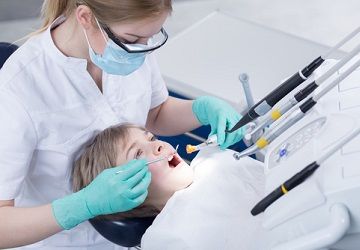Study Estimates Increased Dental Visits in U.S. through 2026
Researchers say that by 2026, 47 percent of Americans will visit the dentist. That's an estimated 334 million visits.

A new study published in the most recent issue of Health Affairs projects an increase in the rate at which Americans will use dental care. Researchers also say that preventive dental care will increase and dental treatment will decline.
Researchers say that by 2026, 47 percent of Americans will visit the dentist. That’s an estimated 334 million visits. The estimate, however, relies on the assumption that parents will take advantage of expanded pediatric dental insurance coverage. The research team, which included two economists and a professor of dentistry, attribute this increase to the passage of the Affordable Care Act (ACA).
The research team relied on data from the Medical Expenditure Panel Survey (MEPS), focusing on the years 1996-2013, to form its projections. That data pool included 557,071 people, about 162,000 of which were children. Within this data set, researchers looked at first, whether an individual saw a dentist at all during a given year, and second, how many subsequent dental visits took place, conditional on that first dental visit.
They then created an additional forecast that took into account expanded access to medical and dental coverage under the ACA, which passed in 2014, a year after the last available year of MEPS data.
“Using the two-part model allowed us to generate a forecast for the percentage of the population with dental care use as well as a forecast for average number of dental visits per person,” the study authors wrote.
The study authors also wrote that a separate forecast was of special importance because “apart from dental coverage, enrollment in private health insurance is a strong predictor of dental care use, possibly because private medical coverage acts as a proxy for health-seeking behavior or results in greater disposable income that individuals allocate to dental care.”
The researchers concluded that dentists can expect to see 42.6 percent of the American population this year. That figure is expected to climb to 44.6 percent by 2026, indicating an annual growth rate of .5 percent. The majority of these visits, the author notes, will be for preventative care.
Adjusting for the ACA boosts the percentage of population to 45.8 percent, and “to 46.6 percent when we assumed that all children would be enrolled in private dental coverage.” Researchers estimate the number of total visits to be 334 million under this projection. Driving these projections, researchers write, is the fact that the future elderly are likely to have better oral health as a result of wider access to fluoride and preventative care in their younger years.
The study concludes that even though an increase in dental care is expected, the findings reflect a “lost opportunity,” in that the ACA didn’t “include a dental benefit in Medicare” or “add adult dental benefits to Medicaid in all states.”